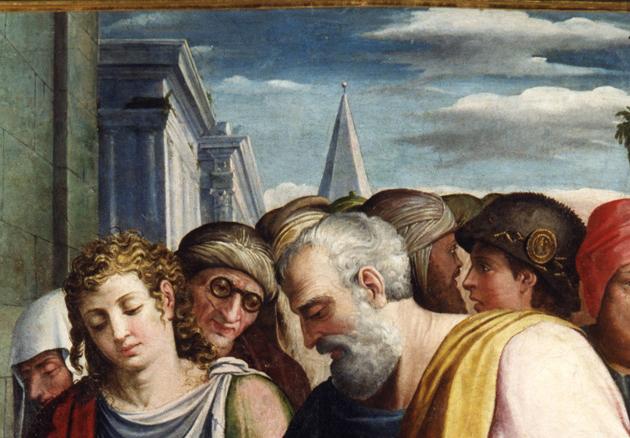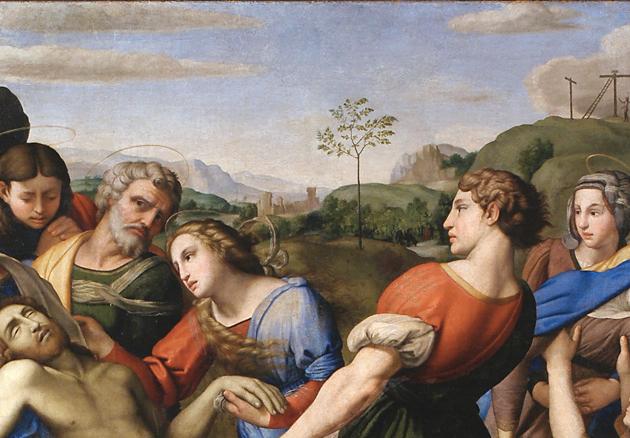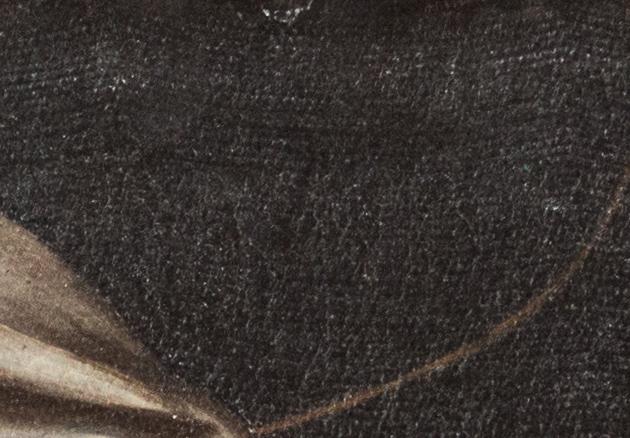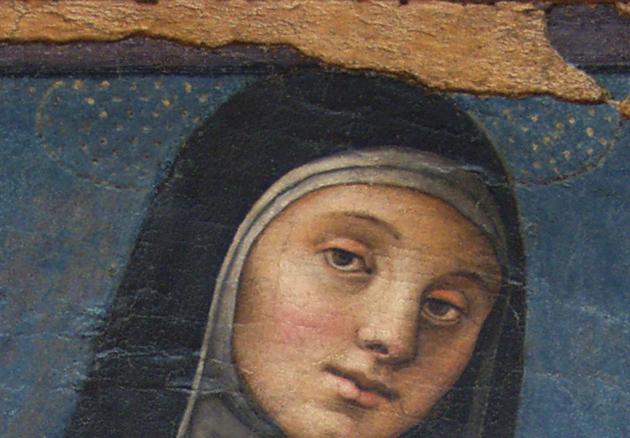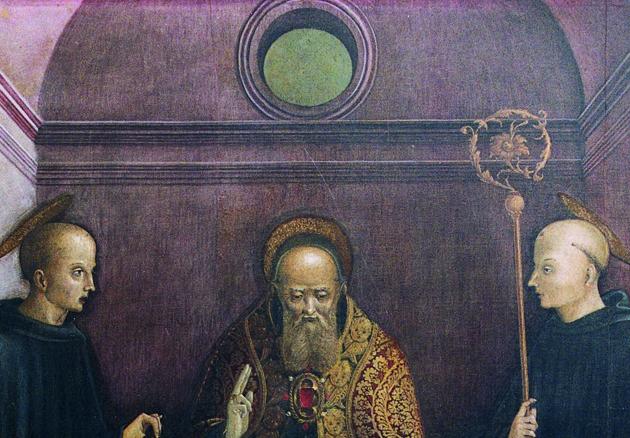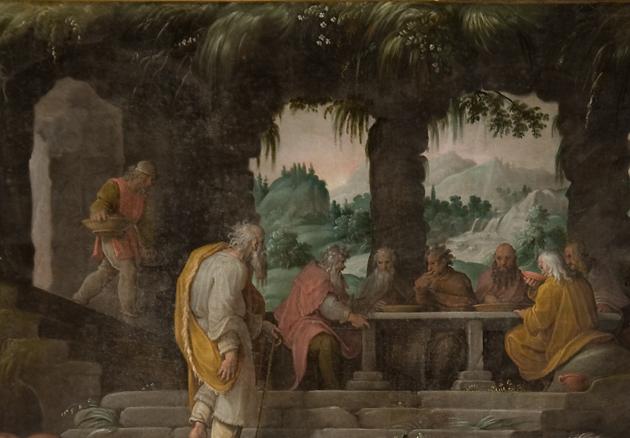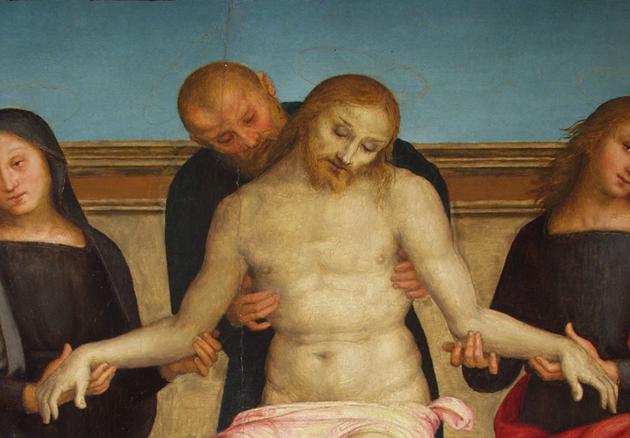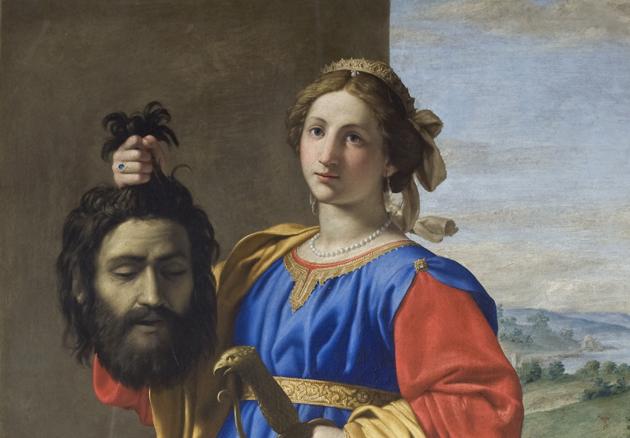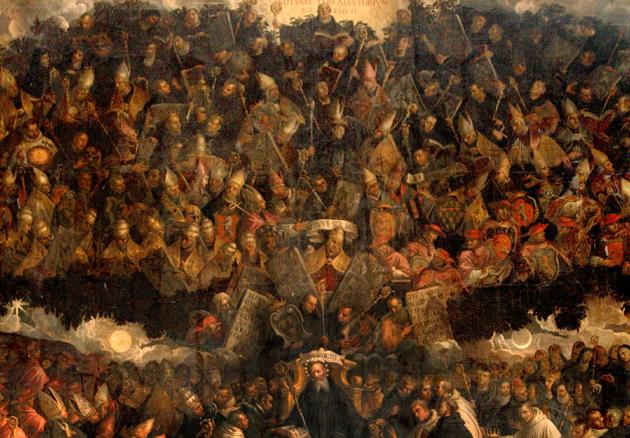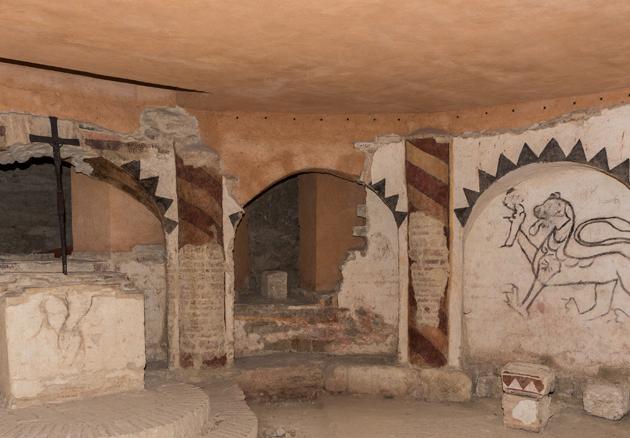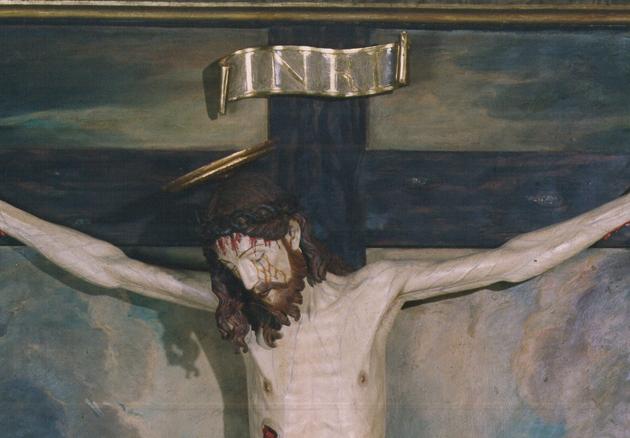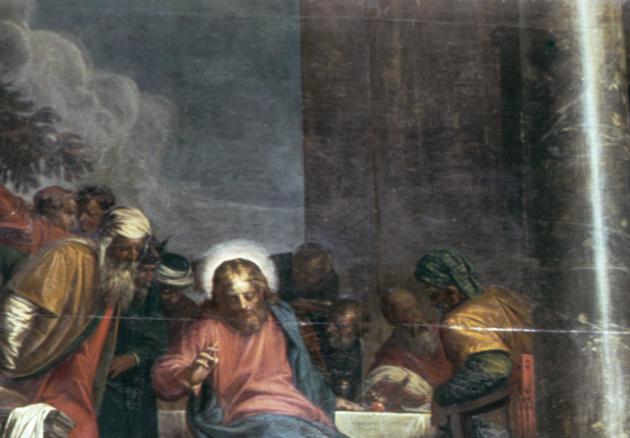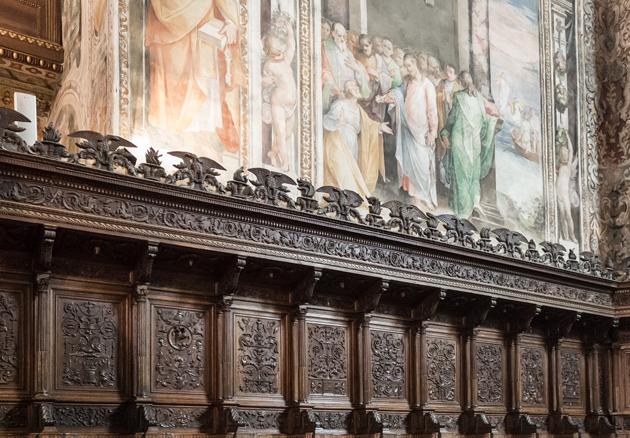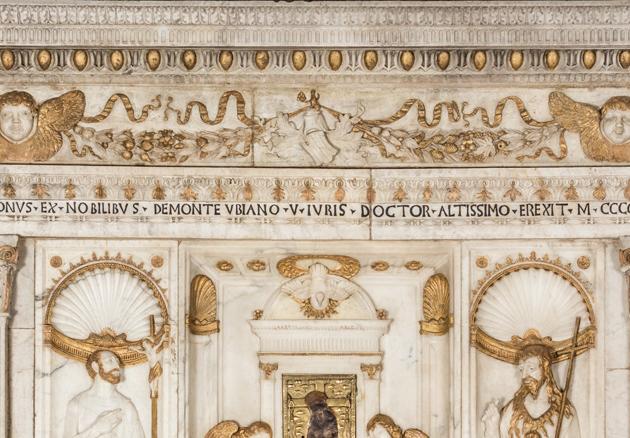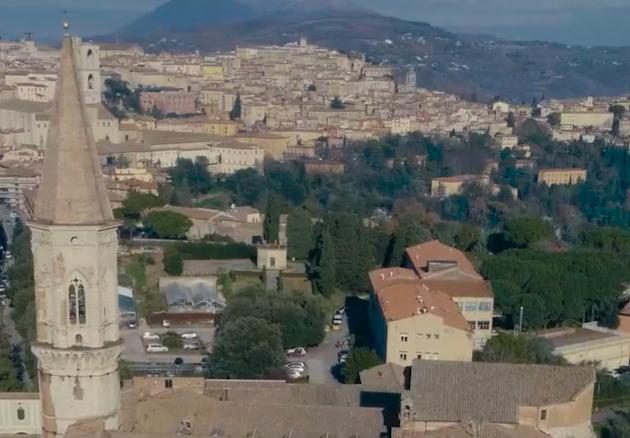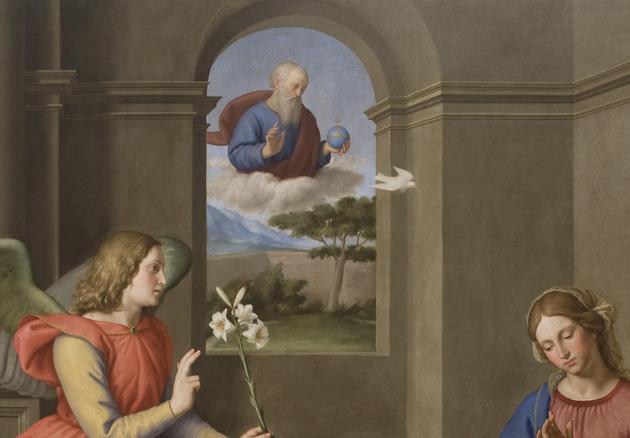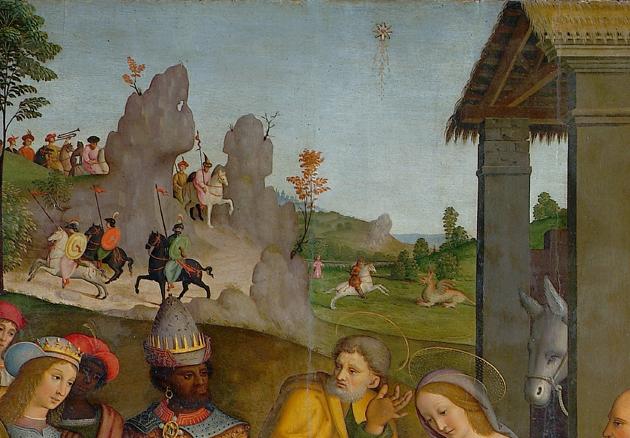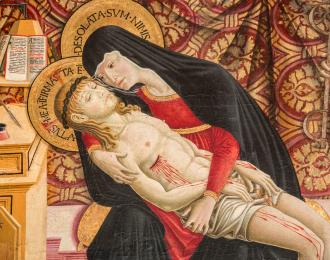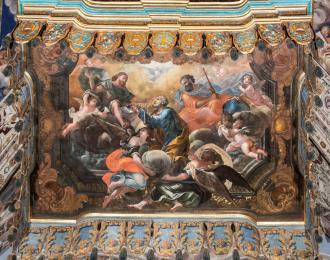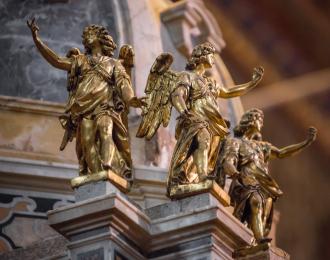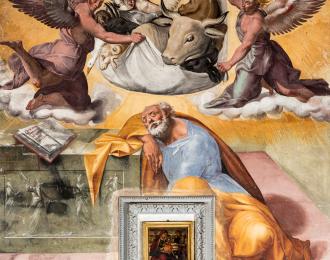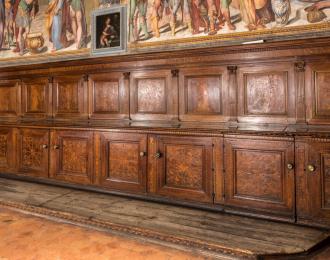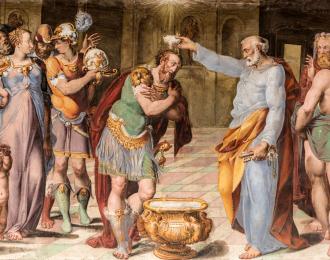San Pietro Museum Complex
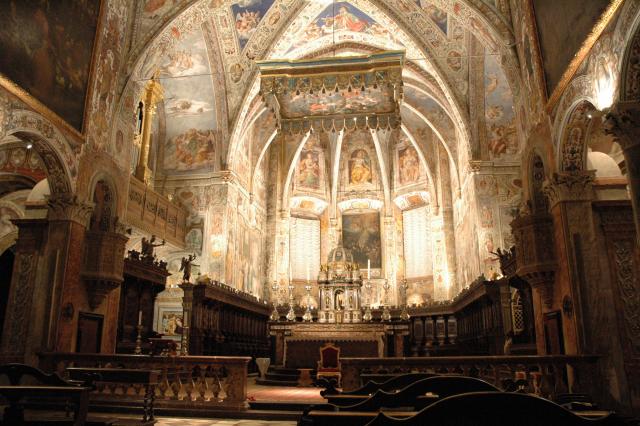
The ancient Basilica di San Pietro standing on Colle Caprarius (also known as Calvario) close to what was probably a burial ground, was mentioned in the 6th century AD by Gregorio Magno as the first burial place of Saint Herculanus of Perugia, the martyr who died trying to defend his city from an attack by the Ostrogoth King Totila.
In 965 Bishop Onesto gave a monk named Pietro Vincioli, born of a noble family from Agello, permission to build a the nucleus of a new Benedictine monastery around the church already on the site. This was to become one of the oldest and most prestigious in Central Italy. As confirmed by a 1045 papal seal from Pope Gregory IV, from the outset the complex was controlled directly by the Church of Rome and enjoyed autonomy from the local religious hierarchy.
Over the following centuries the economic and political power of the Benedictine abbey complex grew to reach a peak between the 13th and 14th centuries before the community became caught up in local events. In 1398 Abbot Francesco Guidalotti took part in a conspiracy which led to the assassination of Biordo Michelotti : this event put a halt to the development of the monastery which was pillaged and burnt down by an uprising of outraged citizens.
The San Pietro Benedictine Abbey saw its fortunes rise anew when Pope Eugene IV ordered it be merged with the Abbey of Santa Giustina of Padua on the 19th March 1436. In 1892, Following the 1860 Pepoli decree (whereby the nascent Italian state expropriated church property), the abbey complex (together with other Benedictine assets) became property of the Fondazione per l’Istruzione Agraria (Agricultural Training Foundation) and currently is home not only to the religious community but also Dipartimento di Scienze Agrarie, Alimentari e Ambientali, il Centro di Ateneo per i Musei Scientifici e l’Orto Botanico dell’Università degli Studi di Perugia (the faculties of Agricultural Science, Environment and Food, and Scientific Museums and also the Botanical garden of the University of Perugia).
Among the Benedictine abbey’s original properties (now owned by the Fondazione per l’Istruzione - Agricultural Training Foundation), the Rocca di Casalina fortress near Deruta and the Rocca di Sant’Apollinare fortress near Spina are of notable historical and cultural significance. Both were transferred to the San Pietro abbey from the Farfa monastery in 1060 under the pontificate of Benedict IX.
Contacts
Address: Borgo XX Giugno, 74 - 06126 Perugia PG
Phone: 075 33753
Email: info@fiapg.it
Website: https://www.fondazioneagraria.it/
GUIDE TO THE ART TREASURES OF THE BASILICA OF SAN PIETRO
ua valid tool for the physical visit to discover works of art through an emotional journey.DOWNLOAD APP FOR ANDROID
DOWNLOAD APP FOR IOS
